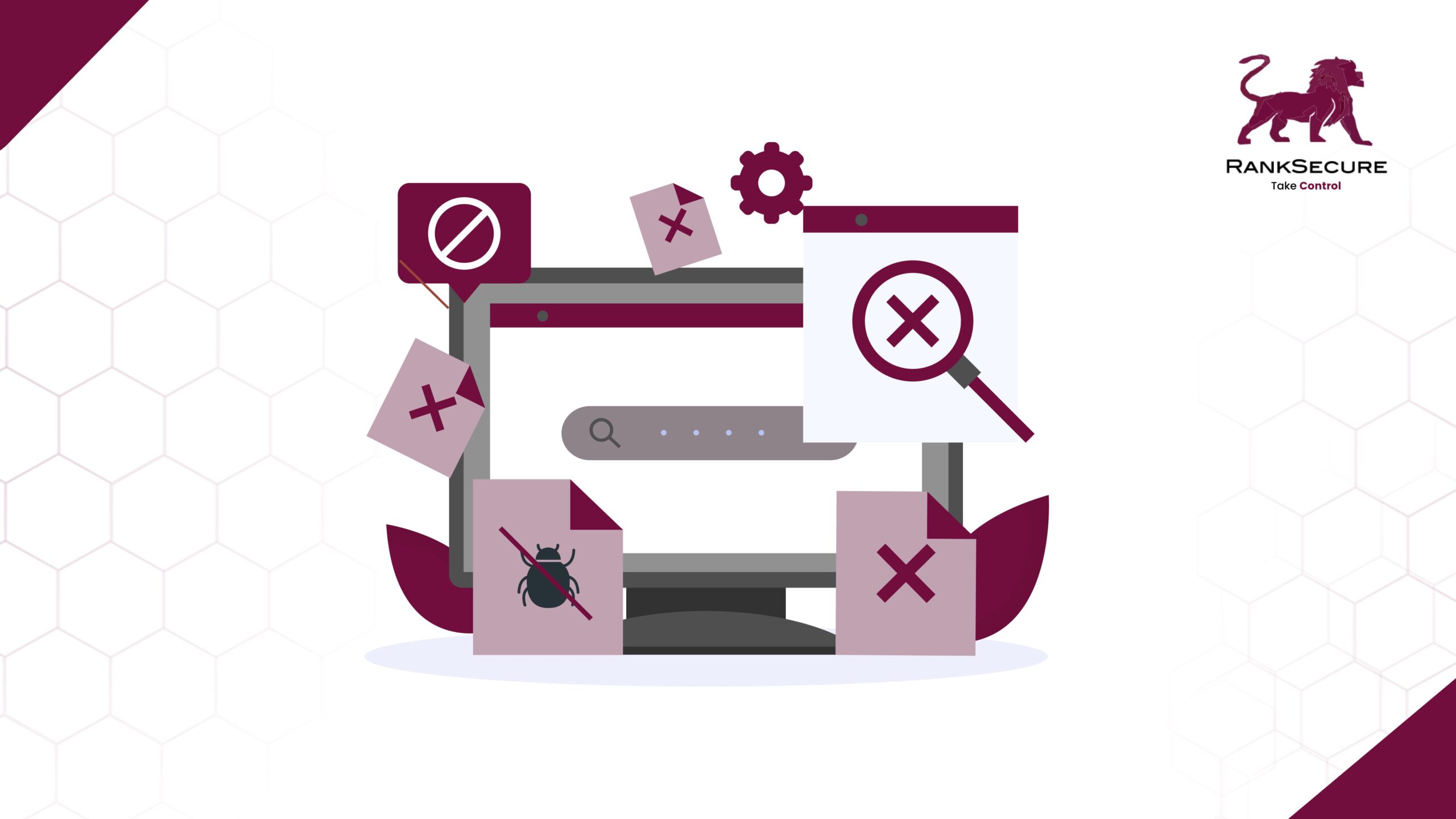
The Power of Penetration Testing in Securing Financial Institutions
In the fast-paced world of modern technology, financial institutions find themselves confronted with an escalating array of cybersecurity challenges and risks. As the financial industry embraces digital transformation and online services, their vulnerability to cyber threats increases significantly. These institutions must grapple with an ever-expanding threat landscape, encompassing sophisticated cyberattacks, data breaches, ransomware, phishing scams, and other malicious activities.
The digital landscape demands that you prioritise cybersecurity measures to safeguard your assets, sensitive customer data, and critical infrastructure. As cybercriminals constantly evolve their tactics, you must adopt proactive and robust security strategies to mitigate risks and ensure the trust of your customers and stakeholders.
To stay resilient and adaptive it is pertinent that you invest in cutting-edge cybersecurity technologies, comprehensive risk assessments, employee training, and robust incident response protocols. An agile and proactive cybersecurity approach is crucial for safeguarding the confidentiality, integrity, and availability of financial services in the digital age.
One of the most valuable tools in this fight against cybercrime is penetration testing.
Why Penetration Testing Matters in the Financial Sector?
Penetration testing holds immense significance in the financial sector due to the critical nature of financial institutions and the sensitive data they handle.
Here are some key reasons why penetration testing matters in the financial sector:
- Protecting Sensitive Data: Financial institutions handle vast amounts of sensitive data, including customer financial information, personal details, and transaction records. Penetration testing helps identify vulnerabilities and weaknesses that could expose this data to unauthorised access or data breaches.
- Preventing Financial Loss: Cyberattacks on financial institutions can result in substantial financial losses, both for the institution itself and its customers. Penetration testing allows organisations to proactively address potential security gaps, reducing the risk of financial losses resulting from cyber incidents.
- Safeguarding Customer Trust: Trust is a crucial element in the financial sector. Penetration testing demonstrates an organisation’s commitment to security, reassuring customers that their data is being protected against potential threats.
- Meeting Regulatory Compliance: Financial institutions are subject to strict regulatory requirements concerning data protection and cybersecurity. Penetration testing helps organisations demonstrate compliance with industry regulations and standards.
- Identifying Weaknesses in Applications and Systems: Financial institutions rely heavily on various applications and systems for transactions, customer interactions, and internal processes. Penetration testing helps identify vulnerabilities in these critical systems, ensuring their security and functionality.
- Staying Ahead of Evolving Threats: Cyber threats in the financial sector are constantly evolving, with attackers employing sophisticated techniques to breach security defenses. Regular penetration testing enables financial institutions to stay one step ahead of these evolving threats by continuously evaluating and enhancing their security measures.
- Testing Incident Response Preparedness: Penetration testing allows financial institutions to assess the effectiveness of their incident response plans. Identifying and addressing security weaknesses before a real attack occurs can significantly improve incident response capabilities.
- Mitigating Reputational Risks: A successful cyber attack on a financial institution can lead to a loss of reputation and customer trust. Penetration testing helps mitigate these reputational risks by detecting vulnerabilities before attackers can exploit them.
According to VMware, there was a staggering 238% surge in cyberattacks against financial institutions in the first half of 2020 alone. The average cost of a data breach in the financial sector was reported to be $5.97 million in 2022 by IBM and the Ponemon Institute.
Considering these alarming statistics, it is evident that information security is a critical aspect of any financial organisation’s business. Penetration testing plays a vital role in ensuring the cybersecurity resilience of your institution by identifying vulnerabilities and providing actionable insights to strengthen their security posture.
Understanding the Types of Penetration Testing
Penetration testing encompasses various types, each designed to assess different aspects of your organisation’s cybersecurity. Let’s explore some of the most common types of penetration testing and how they add value to your organisation:
- External Network Penetration Testing
External network penetration testing involves simulating an attack from an external perspective, imitating the actions of a hacker without any authentication into the organisation’s network. This type of testing focuses on assessing and “attacking” an organisation’s public-facing infrastructure, including firewalls, websites, and email systems. By conducting external network penetration testing, financial institutions can identify and mitigate weaknesses in their web-facing assets, reducing the likelihood of data breaches and ransomware attacks.
- Internal Network Penetration Testing
Internal network penetration testing, also known as an assumed breach penetration test, emulates an insider threat scenario. It operates on the assumption that a hacker already has access to the internal systems and assesses the scale and scope of vulnerabilities within the organisation’s infrastructure. By conducting internal network penetration testing, financial institutions can gain deeper insights into the effectiveness of their internal security measures and identify potential areas of vulnerability.
- Web Application Penetration Testing
Web application penetration testing focuses specifically on identifying vulnerabilities within web applications. This type of testing is particularly relevant for financial institutions that provide software-as-a-service (SaaS) products or have customer-facing web applications.
Through web application penetration testing, financial institutions can measure safeguards against the OWASP Top 10 Web Application Vulnerabilities, identify flaws in business logic and input validation, assess authentication mechanisms, and evaluate the quality of continuous integration and deployment methods.
- Cloud Penetration Testing
With the increasing adoption of cloud computing in the financial sector, cloud penetration testing has become essential. This type of testing helps uncover potential security vulnerabilities specific to an organisation’s cloud environment. It involves auditing cloud configurations against best practices, testing identity and access management systems, assessing the security of public storage containers, and evaluating the effectiveness of virtual subnet rules. Conducting cloud penetration testing enables financial institutions to ensure the security of their cloud-based operations and protect valuable data stored in the cloud.
The Benefits of Penetration Testing for Financial Institutions
Penetration testing offers numerous benefits, ranging from regulatory compliance to enhancing overall cybersecurity resilience:
- Regulatory Compliance
Penetration testing is often a mandatory requirement for financial institutions to achieve and maintain regulatory compliance. Organisations following regulations such as the Gramm-Leach-Bliley Act (GLBA), Payment Card Industry Data Security Standard (PCI DSS), or General Data Protection Regulation (GDPR) may need to conduct regular penetration tests as part of their compliance standards. By fulfilling these requirements, you can demonstrate your commitment to maintaining robust security measures and protecting sensitive customer information.
- Identifying Vulnerabilities
The primary goal of penetration testing is to identify vulnerabilities within your organisation’s systems and infrastructure. By conducting regular penetration tests, one can proactively detect weaknesses that could be exploited by cybercriminals. These tests provide valuable insights into potential entry points for attackers, allowing your organisation to prioritise and remediate vulnerabilities before they result in a data breach or other security incident.
- Strengthening Security Posture
Penetration testing helps you to strengthen your institution’s overall security posture by addressing identified vulnerabilities. The insights gained from penetration tests enable you to implement necessary security controls, refine incident response plans, and enhance security awareness and training programs. By continuously improving your security posture, your organisation can better protect customer data, maintain trust, and mitigate the risk of reputational damage.
- Meeting Cyber Insurance Requirements
As cyber threats continue to evolve, cyber insurance companies are raising the bar on the required safeguards for coverage. Completing a penetration test demonstrates to insurers that an organisation is taking proactive steps to secure its environment. By presenting a completed penetration test, your institution can increase its chances of obtaining cyber insurance and potentially benefit from more favorable coverage terms.
Selecting the Right Penetration Testing Provider
To ensure the effectiveness of penetration testing, you must collaborate with experienced and reputable penetration testing providers.
When selecting a provider, consider the following factors:
- Expertise and Experience: Look for providers with a proven track record of conducting penetration tests in the financial sector. Experience in conducting tests that align with regulatory requirements and industry best practices is crucial.
- Industry Knowledge: Financial institutions have unique security challenges. Choose a provider who understands the specific cybersecurity risks affecting the financial sector and has experience addressing them effectively.
- Comprehensive Testing Methodologies: A reputable penetration testing provider should employ comprehensive testing methodologies that cover a wide range of attack vectors, including social engineering, network scanning, and vulnerability assessment.
- Detailed Reporting: The provider should deliver detailed reports that clearly outline identified vulnerabilities, potential risks, and recommended remediation steps. These reports should be actionable and provide valuable insights for improving cybersecurity defenses.
- Ongoing Support: Cybersecurity is an ongoing effort. Choose a provider that offers ongoing support and guidance to address any vulnerabilities or emerging threats identified during the penetration testing process.
Conclusion
In an era of perpetual cyber risks, safeguarding digital assets and customer data is paramount for financial institutions. Penetration testing plays a pivotal role in this mission, as it helps identify vulnerabilities and strengthens the cybersecurity resilience of these organisations..
According to recent studies, 67% of financial institutions reported experiencing a cyber attack in the past year. With such a high frequency of attacks, conducting regular penetration tests becomes crucial. By working with reputable providers, you can stay one step ahead of cybercriminals and bolster your defense against potential threats.
Furthermore, compliance with regulations is a significant concern for the financial sector. Penetration testing helps your organisation meet regulatory requirements by proactively addressing security weaknesses and protecting sensitive information from potential breaches.
Investing in penetration testing is a strategic and proactive step for your institution . It allows you to enhance your overall security posture, reduce the risk of cyber incidents, and maintain the trust of customers in an increasingly digital and interconnected world. By staying vigilant and continuously assessing your organisation’s security measures, your financial institution can safeguard your integrity and reputation, making cybersecurity an integral part of your business strategy.
Remember, when it comes to cybersecurity, being proactive is always better than being reactive. Take action today to secure your financial institution through penetration testing.
Recent Posts
How to Implement IT Asset Management for Maximum ROI
Organisations are not breached because their defences failed. They are breached because their visibility did. In most enterprises, the issue is not that assets are unmanaged. It is that too many are unaccounted for. Legacy systems operating outside policy. Cloud workloads deployed beyond governance. Endpoints that no
How VAPT Supports Zero Trust Security Models
If Something Can Go Wrong in Security, It Eventually Will That’s the reality Zero Trust is built for. It assumes users will click what they shouldn’t. Devices will connect from untrusted networks. Credentials will leak. And one misconfigured rule can open access far beyond what was intended.
How GRC Tools Help Finance, Healthcare & Retail Teams
No risk or compliance team ever sets out to operate in abstraction. Yet that’s exactly what happens when sector context is stripped from the systems that underpin decision-making. It’s not about whether the frameworks are there because they are. The problem is that they’re misaligned with how each







